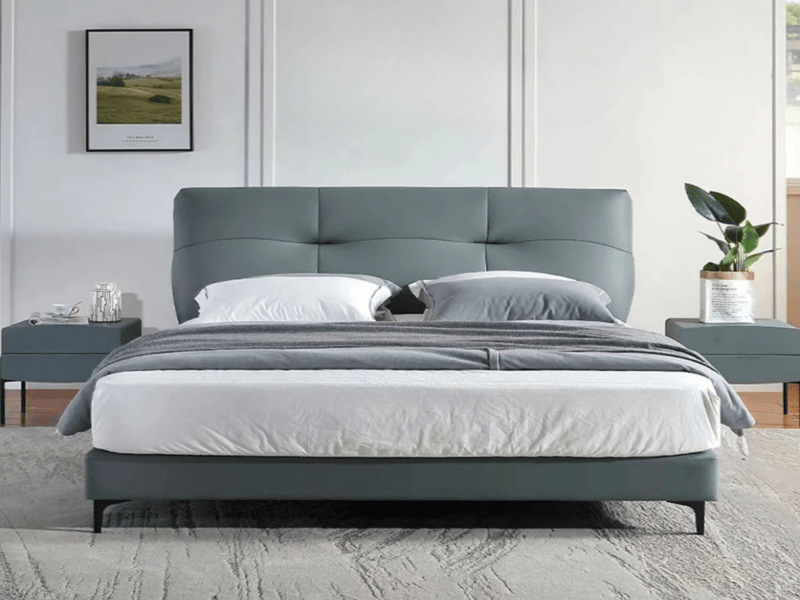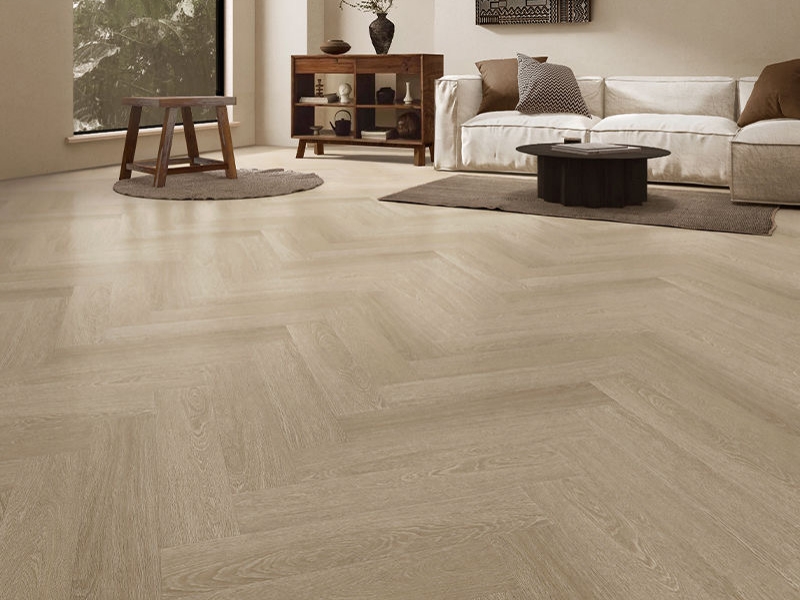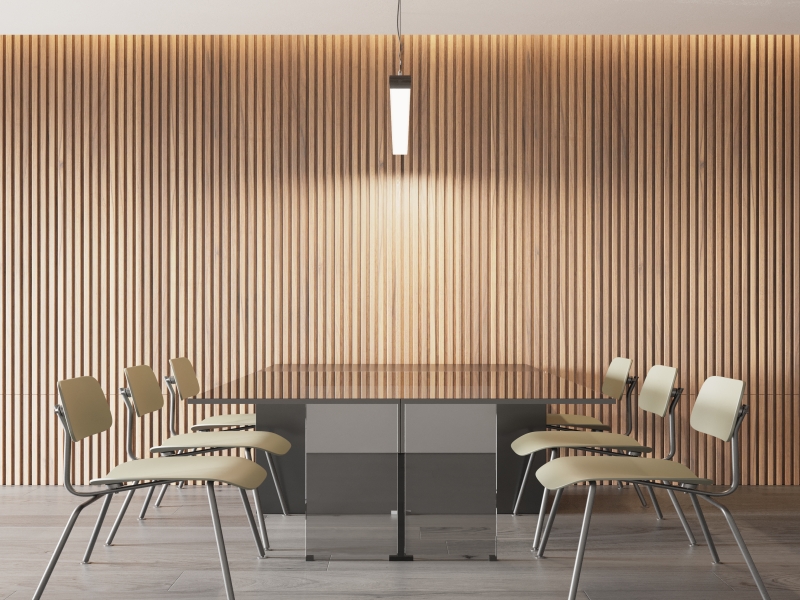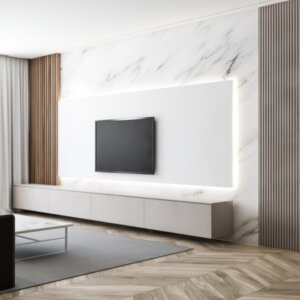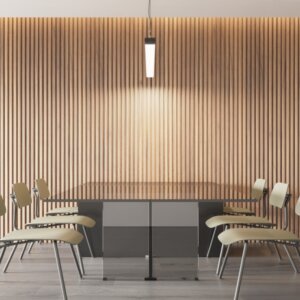Are IKEA Beds Good? The Ultimate IKEA Bed Review
IKEA beds dominate the furniture market with their blend of affordability, modern design, and functionality. For bed slats suppliers and manufacturers, understanding the quality of IKEA beds—especially their bed slats and bed frame slats—offers critical insights into consumer preferences and production standards. This ultimate review explores whether IKEA beds are a worthwhile investment, focusing on construction, durability, and appeal to both consumers and industry professionals. With detailed analysis, this article informs procurement decisions and inspires innovation in bed manufacturing.
Drawing from top-ranking online reviews and expert knowledge, we’ll examine the strengths and weaknesses of IKEA beds, emphasizing the pivotal role of bed slats. We’ll also compare them to competitors and provide practical considerations for manufacturers. By the end, you’ll understand how IKEA beds perform and what lessons can be applied to your own bed frame slats production. A FAQ section with 10 questions will address common concerns for bed slats suppliers and procurement teams.
Introduction: Why IKEA Beds Are Popular Among Consumers and Manufacturers

IKEA beds have earned a reputation as a go-to option for stylish, budget-friendly furniture, but their appeal extends beyond consumers to bed manufacturers and bed slats suppliers. What drives this popularity, and how do bed slats and bed frame slats contribute to their success? This section explores the factors behind IKEA’s dominance and offers insights for industry professionals looking to refine their own products.
One major draw is IKEA’s pricing strategy. By using cost-effective materials like particleboard for frames and solid or laminated wood for bed slats, IKEA keeps costs low without sacrificing basic functionality. For example, models like the MALM and NEIDEN feature sturdy wooden bed slats that support a range of mattresses, from foam to spring. This balance of affordability and utility is a lesson for manufacturers: consumers value accessible pricing, but the quality of bed frame slats can’t be overlooked.
Customization is another strength. Many IKEA beds, such as the SLATTUM, come with adjustable bed slats that let users tweak support levels. This adaptability appeals to consumers seeking personalized comfort and signals to manufacturers the growing demand for flexible designs. Imagine a bed slats supplier offering adjustable slats inspired by IKEA—such innovation could set you apart in a competitive market.
Sustainability also plays a role. IKEA’s use of renewable wood for bed slats aligns with eco-conscious trends, a factor procurement teams increasingly prioritize. However, not all feedback is glowing. Some users note that bed frame slats in cheaper models, like the TARVA, may creak or snap under heavy weight over time. This highlights a key challenge for manufacturers: durability must match affordability.
For bed manufacturers, IKEA’s approach offers a blueprint and a cautionary tale. Their modular designs and sustainable materials are worth emulating, but reinforcing bed slats for longevity could address consumer pain points. In short, IKEA beds are popular for their price, style, and innovation—but there’s room for improvement that savvy bed slats suppliers can exploit.
The Role of Bed Slats in IKEA Beds: Are They Built to Last?
Bed slats are the unsung heroes of any bed frame, providing the foundation for mattress support and comfort. In IKEA beds, their role is especially critical given the brand’s focus on affordability and lightweight design. But are IKEA’s bed slats built to last? This section dives into their materials, design, and performance, offering insights for bed slats suppliers looking to refine their products.
IKEA typically uses solid pine or birch for its bed slats, as seen in models like the LUROY and LONSET slatted bases. These renewable woods are lightweight and cost-effective, aligning with IKEA’s sustainability goals. The LUROY, for instance, features 17 slats spaced evenly to support standard mattresses, while the LONSET offers 28 slats with adjustable zones for customized firmness. However, the thickness and finish of these slats vary. Some users report that the thinner LUROY slats (around 1-2 cm thick) can bow or snap under heavier loads, like memory foam mattresses exceeding 200 pounds.
Performance under different weights is a mixed bag. For lighter users or thinner mattresses, IKEA’s bed frame slats perform admirably, offering good ventilation and flexibility. Reviews of the NEIDEN bed, a simple pine frame with slats, praise its sturdiness for single sleepers. Yet, for heavier individuals or couples, durability becomes an issue. The TARVA’s slats, for example, have been criticized for creaking or breaking after a year of use, suggesting that material strength and spacing need improvement.
Common issues also include slat displacement. In the LUROY base, slats are secured with fabric strips, but some users find them slipping out of place, causing mattress sagging. The LONSET addresses this with a more robust frame, but its higher price point narrows its appeal. Compared to box springs or solid platforms, IKEA’s bed slats excel in breathability—ideal for foam mattresses—but lag in weight distribution for heavier setups.
For bed slats suppliers, these findings point to opportunities. Reinforcing slats with thicker wood or adding support bars could enhance durability without sacrificing affordability. Adjustable designs, like those in the LONSET, are a growing trend worth exploring. Manufacturers might also consider closer slat spacing (e.g., 2-3 inches apart) to boost support, addressing a frequent consumer complaint. IKEA’s bed slats are functional and eco-friendly, but their longevity hinges on thoughtful design tweaks—insights suppliers can use to outshine the retail giant.
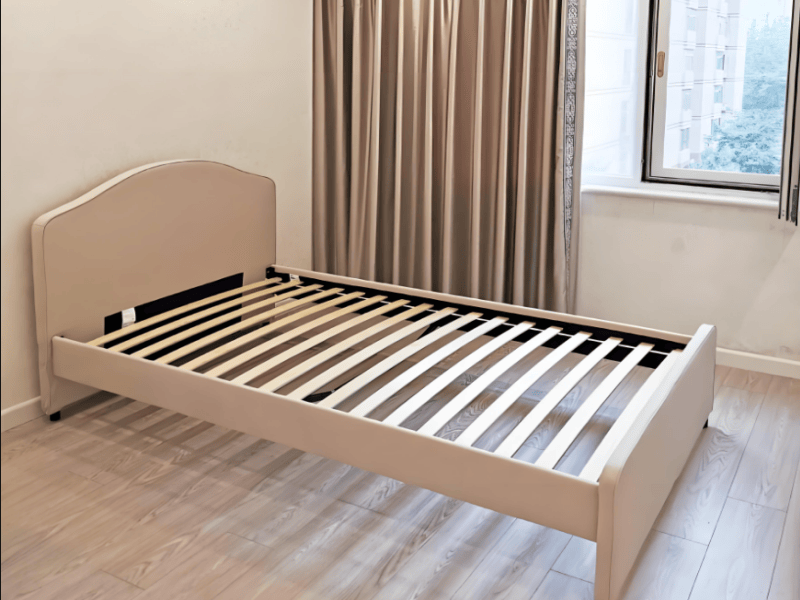
Procurement Insights: Evaluating IKEA Beds for Bed Slats Suppliers
For procurement professionals and bed slats suppliers, IKEA beds offer a case study in balancing cost, quality, and consumer satisfaction. This section evaluates IKEA’s approach from a sourcing perspective, providing actionable insights for manufacturers aiming to compete or collaborate.
From a cost-versus-quality standpoint, IKEA excels at delivering value. Frames like the MALM ($200) and NEIDEN ($70) pair particleboard or pine with wooden bed slats, keeping production costs low. The LUROY slatted base, made from laminated pine, is a prime example: it’s affordable to produce yet functional for light-to-medium use. However, quality trade-offs emerge with durability. Procurement teams note that while initial costs are low, frequent replacements due to slat breakage (e.g., in the TARVA) can erode long-term value.
Sourcing sustainable materials is a strength IKEA leverages well. Their bed frame slats use FSC-certified pine and birch, meeting eco-friendly procurement standards. Suppliers can replicate this by partnering with certified lumber providers, ensuring compliance with green regulations while maintaining competitive pricing. However, IKEA’s reliance on thinner slats suggests an opportunity: procurement could prioritize slightly thicker, denser wood (e.g., 2.5 cm vs. 1.5 cm) to boost durability without a significant cost spike.
Customer satisfaction metrics reveal a nuanced picture. Reviews praise IKEA’s affordability and design—70% of users on sites like Home Stratosphere rate the MALM highly for value—but durability complaints persist. The LONSET base earns better marks for support, hinting that adjustable bed slats could sway procurement decisions. Suppliers should track similar metrics: if slats fail within a year, as some IKEA users report, it’s a red flag for quality control.
Practical tips for bed slats suppliers include balancing affordability with resilience. Sourcing pre-treated wood to resist warping, or offering modular slat kits compatible with IKEA frames, could appeal to cost-conscious buyers and DIY enthusiasts alike. Procurement teams might also explore hybrid designs—wood slats with metal reinforcements—to rival IKEA’s offerings while addressing durability gaps. Ultimately, IKEA beds show that low cost wins initial sales, but lasting value keeps customers (and procurement officers) coming back.
Pros and Cons of IKEA Beds
IKEA beds are a popular choice for consumers seeking affordable, stylish furniture, but they come with both advantages and drawbacks. For bed manufacturers and bed slats suppliers, understanding these can provide valuable insights into market demands and areas for improvement.
Pros
- Affordability: IKEA beds are often significantly cheaper than comparable models from other brands, making them accessible to a wide audience. This pricing strategy uses cost-effective materials like particleboard for frames and solid wood for bed slats. For example, the MALM bed frame, priced around $200, offers a sleek design at a fraction of the cost of similar beds from premium retailers.
- Modern Design: IKEA’s minimalist aesthetic appeals to consumers looking for contemporary furniture. Models like the SLATTUM feature clean lines and neutral colors that fit various decor styles, a trend manufacturers can emulate to attract design-conscious buyers.
- Customization: Some IKEA beds, such as the SLATTUM, come with adjustable bed slats that allow users to modify the firmness level. This feature is increasingly popular as consumers seek personalized comfort, presenting an opportunity for bed slats suppliers to innovate with adjustable designs.
- Sustainability: IKEA’s use of renewable materials like pine and birch for bed frame slats aligns with growing consumer demand for eco-friendly products. Manufacturers can leverage this trend by sourcing sustainable wood or exploring alternative eco-conscious materials.
Cons
- Durability Concerns: While affordable, IKEA beds—particularly their bed slats—can suffer from durability issues. Users of models like the TARVA report that the wooden slats may creak or snap under heavy weight, a common complaint that highlights the need for reinforced designs.
- Assembly Challenges: IKEA’s flat-pack model requires self-assembly, which can be time-consuming and frustrating for some consumers. This is a pain point that manufacturers could address by offering pre-assembled options or simplifying installation processes.
- Quality Variability: There are reports of inconsistencies in quality across different IKEA bed models. For instance, while the HEMNES bed is praised for its sturdiness, cheaper options like the NEIDEN receive mixed reviews for their longevity.
- Limited High-End Options: IKEA’s focus on affordability means fewer premium features, such as high-grade materials or advanced support systems. This gap presents an opportunity for suppliers to cater to consumers seeking luxury or specialized bed frames.
In summary, IKEA beds offer a compelling mix of affordability and design but face challenges in durability and assembly. For bed slats suppliers, these insights underscore the importance of balancing cost with quality and innovation to meet evolving consumer expectations.
Reviews of Bed Frame Suppliers: What Manufacturers Need to Know
For bed manufacturers and bed slats suppliers, understanding how competitors’ products are perceived can inform product development and marketing strategies. Below are summaries of customer feedback on popular bed frame suppliers, with a focus on bed slats and overall quality.
1. IKEA
- Bed Slats: IKEA’s LUROY slatted base is often criticized for its slats slipping out of place, causing mattresses to sag. However, the LONSET base, with more slats and a sturdier design, receives praise for better support and durability.
- Overall: Customers appreciate IKEA’s affordability and design but note that cheaper models may lack longevity. The MALM bed frame, for example, is lauded for its sleek look but sometimes develops squeaks over time.
2. Woocan Wood
- Bed Slats: As a specialized bed slats supplier, Woocan Wood offers high-quality wooden slats praised for durability and support. Customers highlight the use of premium materials and customizable options, though prices are higher than IKEA’s.
- Overall: Woocan Wood is favored by consumers seeking robust, eco-friendly bed slats, making it a strong alternative for those willing to invest in quality.
3. Zinus
- Bed Frames: Zinus’s metal bed frames are appreciated for their modern designs and affordability, but some users report squeaking or instability over time.
- Bed Slats: Their slatted bases, often paired with steel frames, provide good ventilation and support, though spacing can be too wide for thinner mattresses, leading to sagging.
4. Ashley Furniture
- Bed Frames: Known for high-end wooden bed frames, Ashley Furniture receives positive reviews for craftsmanship and durability. However, the higher price point may limit accessibility for budget-conscious buyers.
- Bed Slats: Their bed frame slats are typically solid hardwood, offering superior support and longevity compared to IKEA’s budget options.
These reviews illustrate the trade-offs between cost, quality, and design in the bed frame market. For bed slats suppliers, the feedback underscores the demand for durable, well-designed slats that enhance mattress support and user comfort.
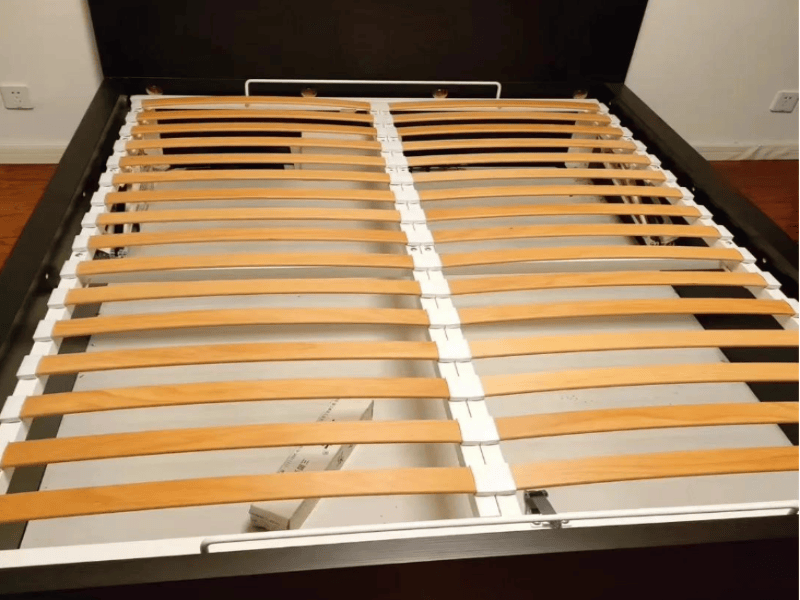
FAQ Tips: 10 Questions About IKEA Beds and Bed Slats Answered
For manufacturers and bed slats suppliers, addressing consumer and procurement questions is key to staying competitive. Here are answers to 10 common queries about IKEA beds and their bed slats.
- Are IKEA bed slats durable enough for heavy mattresses?
IKEA’s LUROY slats handle lighter mattresses well but may bow or break under heavy ones (e.g., over 200 pounds). The LONSET is sturdier, but suppliers could offer reinforced alternatives. - How do IKEA bed frame slats compare to custom options?
IKEA’s slats are affordable and functional but lack the bespoke quality of custom suppliers like Woocan Wood, which offer thicker, tailored designs. - Can bed slats suppliers replicate IKEA’s adjustable designs?
Yes, adjustable slats like the LONSET’s are replicable with tension mechanisms—suppliers could innovate further with smart adjustments. - What materials does IKEA use for its bed slats?
Solid pine or birch, often laminated, balances cost and sustainability but may lack the strength of oak or maple. - Do IKEA beds need frequent bed slat replacements?
Cheaper models like the TARVA may require replacements within 1-2 years under heavy use; LONSET lasts longer. - How do bed frame slats affect mattress lifespan?
Well-spaced slats (e.g., 3-4 inches) improve ventilation, extending foam mattress life, but loose slats can cause premature wear. - Are IKEA bed slats eco-friendly for procurement?
Yes, their FSC-certified wood meets green standards, a model suppliers can adopt. - What weight can IKEA bed slats support?
LUROY supports around 300 pounds; LONSET handles up to 400-500 pounds, per user reviews. - How easy is it to source bed slats for IKEA beds?
IKEA sells replacements, but third-party bed slats suppliers can offer compatible, upgraded options. - Should manufacturers adopt IKEA’s bed slat design?
Partially—emulate affordability and sustainability, but enhance thickness and spacing for durability.
These answers provide clarity for bed slats suppliers aiming to meet market needs while learning from IKEA’s successes and shortcomings.

